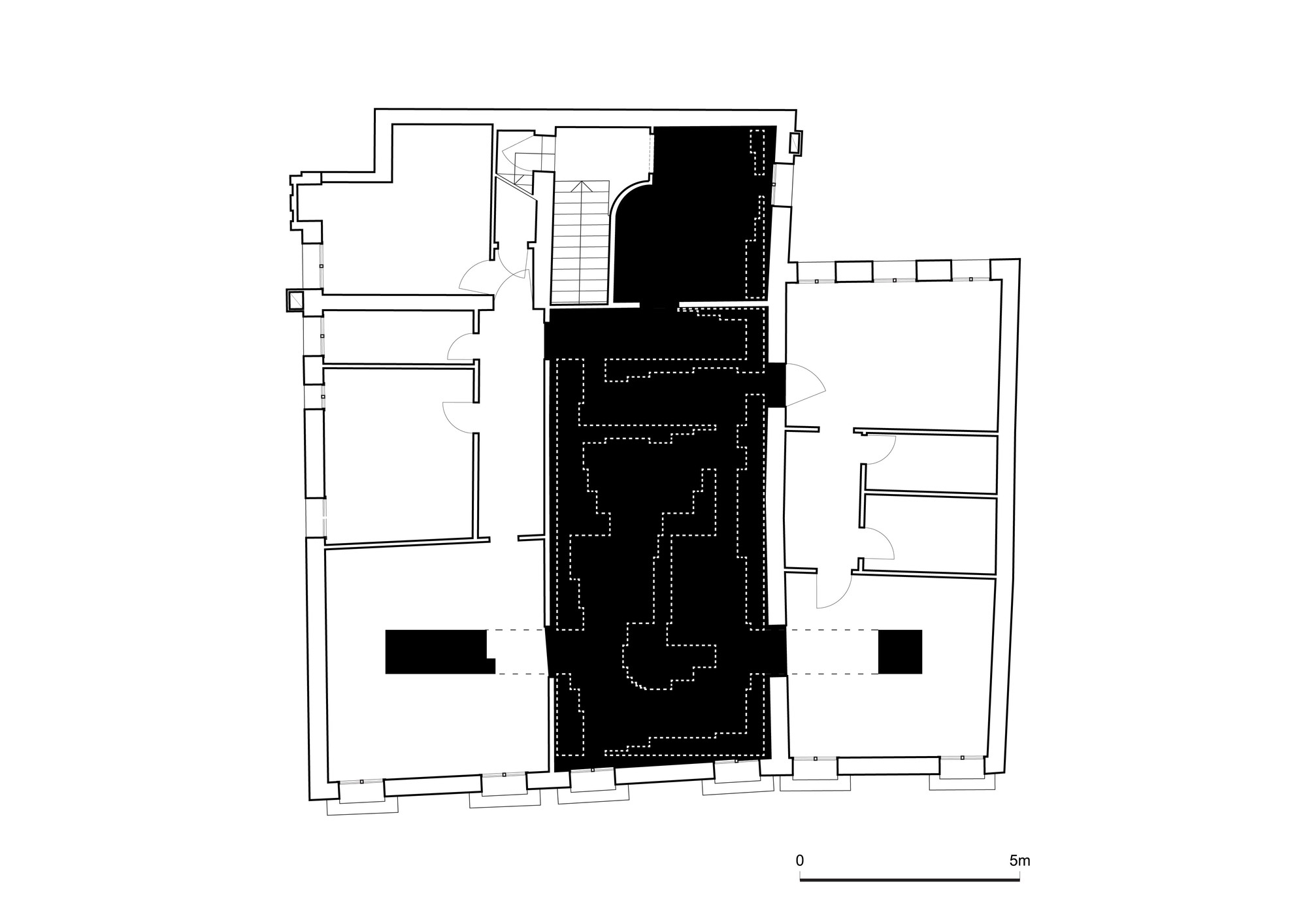
Cyprus has been shaped by a tumultuous history. Power struggles between invaders, conquerors and colonial powers have all left indelible marks on the landscape, much of which can be witnessed in the island’s capital of Nicosia.
Uncovering this history, the curators of Cyprus’ fifth participation at the 2014 Venice Architecture Biennale will expose the island’s layered past and the story of Nicosia in allegory form with the exhibition Anatomy of the Wallpaper.
Learn more and read Cyprus’ full curatorial statement, after the break...


From the curators: Our pavilion undertakes to present a creative and a retrospective reconstruction of the island’s history, and specifically of one of its most important settlements, that of its capital, Nicosia. Due to Cyprus’s strategic location, the island has suffered throughout its history from invaders, conquerors and colonial powers. They all left their marks indelibly on the island, and predominantly on the form and the structure of its settlements. Despite its limited area, its major strategic location contributed to the formation of a productive polyphony by diverse, political regimes, remarkable paradigms of architectural forms, elements and cultures. Nicosia constitutes a city of innumerable historical, social and cultural layers. It has been constructed in the same way as history, persistently by the 'victors', and according to the victor's history. Those, who control the physical space, always control the cultural space, and are never the ones who lost the battle over history. [Sharon Rotbard]
The story of the city is presented in the form of an allegory. In such a literary device, there is an immense power to illustrate multifaceted ideas and concepts, in such ways, that are easily accessible and tangible to its viewers.

The City required a Wallpaper to stimulate its growth. Suspended right along the city center, the Wallpaper gave the city a striking background imaginary: a Scenery, through the years, that contributed to an unexpected Scenario. Gradually opposed along either side of the Wallpaper, the two different parts of the City, -developing different aspirations, that pertained to their future-, abut into an aggressive confrontation. A developing megalomania led both side into a non-comprehensive settlement with significant changes, eventuated in both sides. Space became the battlefield of conflicting ideologies. An alarmed awakening of the City facing a blank Wallpaper, operated by a newly powered domain, terminated this madness! A ‘horror vacui’ sense, a colorless end on the pantone of its horizon, declares the City’s worst economic catastrophe, followed by an identical one. With the passage of the time, when the Wallpaper’s layers are scraped away, or washed off, different landscapes are gradually revealed. Stories from different times unpredictably appear, while the City rediscovers its history. The Wallpaper, dividing its core, paradoxically provides space for contact - a Space, where the collective memory has been recorded, whilst the City can persue its identity. [Michael Hadjistyllis]

At the moment when ideologies are fading, undeniable truth and theories are proved as false, identities are flattened and sacrificed to modernity, this will be the moment when history reaches its pivotal point. It is the point, where the story of our times can be reconstructed.
The Wallpaper is formatted into an immaterial and intangible element, in an attempt to symbolize the divisions of Nicosia. A line that crosses ‘walled’ Nicosia, having appeared from medieval to contemporary times, alongside an east-west axis. In maps of the medieval period this was a river, a natural partition, which at a later period turned into a man–made divide. Despite the fact that, at a later period the river was converted into a street, later through human effort, it has been turned into a chasm, a dangerous “no-man’s land”: a dead zone. [Yiannis Papadakis, Nicosia After 1960]. Cities, like dreams, are made of desires and fears. [Italo Calvino, Invisible Cities 1972]. Fears of societies to be met, and desires to be exchanged.

The Wallpaper constitutes an illustration over an immaterial and intangible element. With the passage of time, new physical layers are inserted on the Wallpaper, thus, from its earliest form, being immaterialized and intangible, it is transfigured afterwards, into a physical barrier. It encompasses thickness, then is formatted into a Wall, and then into a Space. Being presented into a simplified form of a narration (where names, time and place do not exist), we aim to prioritize ideas and concepts. Part of the Wallpaper will be exposed at the exhibition space, in a one to one scale, in its crucial form, whilst it is decorticating, and allowing the viewer to reveal different stories of time. It is a gesture, that testifies the allegory’s historical validity.

The Cyprus pavilion is commissioned by Petros Dymiotis of the Cultural Service Ministry. Architect Michael Hadjistyllis and junior architect Stefanos Roimpas will serve as curators.
The design team was made up of the following individuals: Tolis Apostolidis, Constantinos Caropoulos - Alefantis, Eleni Hadjikyriakou, Emilios Hadjistyllis, Katerina Hadjistylli, Loukas Koutsovendis, Constantinos Louca, Violeta Prado - Papadouri, Maria Rousis, Kleanthis Rousos, Stella Savva, Panayiotis Tembriotis and Andrea Verni.
Andrea Katsavra, Maria Papaloizou, Giorgos Marcou and Tony Maslić will serve as exhibitors.














